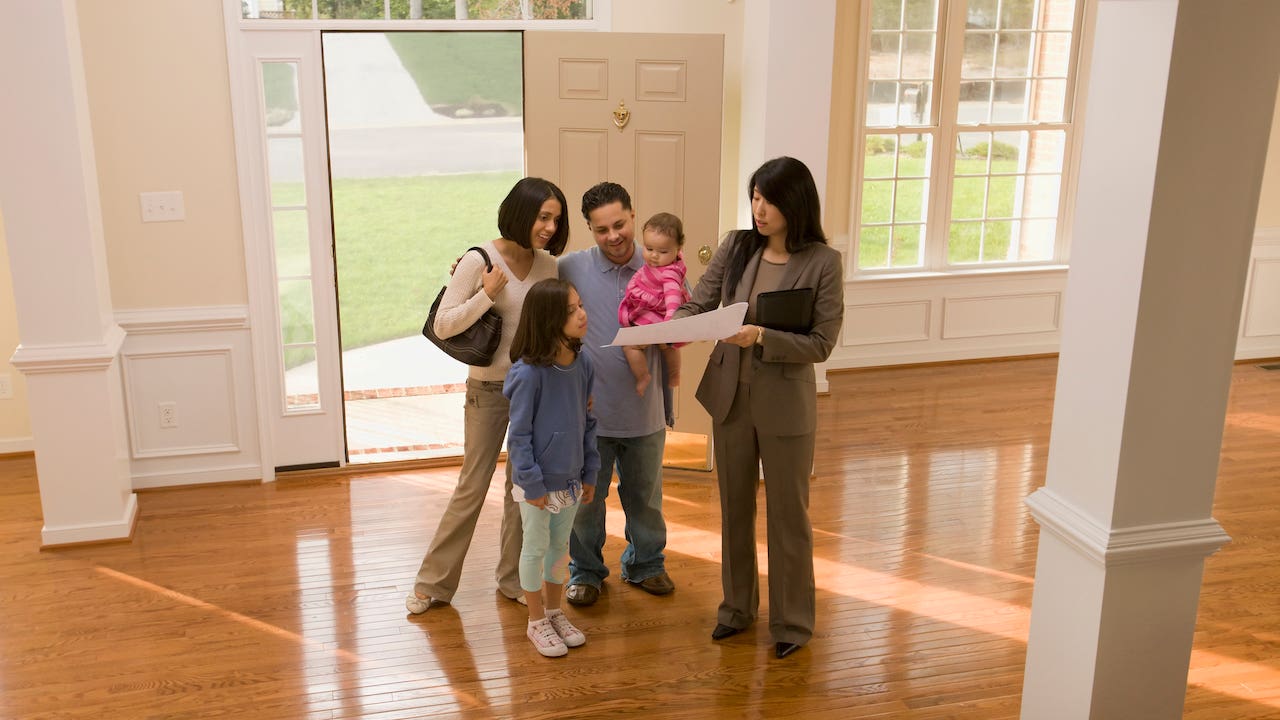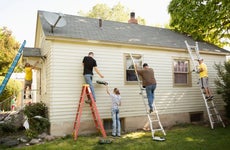Is that house you’re considering a flip? Here’s what to know

The Bankrate promise
At Bankrate we strive to help you make smarter financial decisions. While we adhere to strict , this post may contain references to products from our partners. Here's an explanation for .
House flipping is hardly new. But as real estate prices skyrocketed during the COVID-19 pandemic, growing numbers of people have seen an opportunity to earn a quick buck by buying a property — often, a distressed or aging one— fixing it up, and then reselling it for a profit as the market pushed values ever higher. Nearly one in 10 homes sold in the first quarter of 2022 were flips, according to real estate data firm ATTOM’s first-quarter 2022 “U.S. Home Flipping Report” — a 20-year record.
That’s nice for the flippers (as these investors/sellers are called). But how about you, the home-hunter? Is buying one of these quick-turnaround properties a good idea?
You certainly don’t need to categorically avoid flipped properties. But there are some things to watch out for if you’re looking at one.
Should you buy a flipped house?
A flipped property does have some strong selling points. A lot of its features and fixtures will be new or improved — the flipper’s fixed it up to appeal to buyers, after all. It may be in a desirable or up-and-coming neighborhood. And even with the flipper’s markup, it may still be well-priced for the area. Certainly, you’ll save on the time and hassle of doing renovations yourself.
However, flipped houses can sometimes be more trouble than they’re worth, especially for properties at lower price points. “There’s always been an issue with fix and flips with the quality of them,” says Stephanie Fix, a Realtor with RE/MAX Professionals in Denver. “The margins are so slim these days with these investors that they’re really cutting a lot of corners.”
In fact, that same ATTOM first-quarter 2022 “U.S. Home Flipping Report” noted that while flipped-home sales are up, profit margins on those sales dipped to their lowest point since 2009. Online real estate giant Zillow, which had made a big push into house-flipping with its iBuying platform, exited the biz in November 2021, deciding it had overpaid for too many properties.
What to watch out for with a flipped house
If you’re considering a home that was recently renovated by a flipper, you’ll want to make sure that the “improvements” were done properly. Unfortunately, the signs often aren’t obvious.
The key is to look for indications that the place hasn’t been occupied. For example, Fix recently toured a house that she could tell was flipped because a kitchen drawer was blocked by the refrigerator and the dishwasher wasn’t installed properly — things that would prevent people from being able to function in there.
Small irritations, like missing fixtures or finishes that seem off, can be more than cosmetic issues. A problem on the surface “tells me to be wary of what’s behind the walls,” Fix says. “Most of the things that are dangerous, you can’t always see with your eyes.”
Alterations that seem rushed on the surface could indicate bigger problems, like electrical work that isn’t up to code or plumbing that wasn’t installed correctly. Addressing issues like that can become costly, especially if you haven’t factored them into your budget.
Other warning signs/search tips:
- If any of the outlets only have holes for a two-prong plug, or the junction box has old fuses instead of breakers, these are signs that the flipper skipped some major steps that could cost you tens of thousands of dollars to fix.
- If the basement or crawl-space is accessible, take a look. Homes over 100 years old are often expensive to install modern HVACs in. Many flippers cut corners by literally cutting holes through the foundation supports. If they seem big, beware: It shouldn’t look like someone cut out a chunk of foundation to run ductwork.
What to do if you’re buying a flipped house
First off, it’s crucial to work with a knowledgeable Realtor or real estate agent if you’re considering a flipped home, Fix says. Flipped properties are rarely advertised as such. “An experienced agent is probably going to have a better eye than the buyer,” she says.
When she tours a house that she suspects is being flipped, she’ll check the title’s chain of custody to see who owned the home previously, and will reach out to other agents in her network to see if anyone has experience buying from them.
You can easily tell if the home is a flip by looking at the property records. If the home is back on the market just a few months after being purchased by a new owner, odds are it’s a flip.
Next step: Don’t neglect your right to a professional inspection. In a roaring seller’s market, like the one of the past twos, many buyers waive home inspections and other contingencies in their contracts to make their offers more attractive. Fix says that’s an especially bad idea on flipped properties.
Flippers sometimes skip getting permits for the work they do. So getting an experienced inspector to go take a thorough look at the property is crucial, to make sure everything is up to code. “It’s going to be really important to do your sewer and separate roof inspections,” she says.
Bottom line on buying a flipped home
Flipped houses may seem up-to-date on the surface, but shiny new finishes can sometimes mask shoddy work. When touring a house that’s a flip — and you should always try to ascertain if it is — you’ll want to examine every nook and cranny carefully.
If you do make an offer, you’ll want to be sure to have the home professionally inspected before you close, and set aside money for any problems that may crop up as a result of renovations that were skimped on or done too hastily. Or ask the seller to cover them. Don’t go way out of pocket to subsidize a flipper’s profit.
Related Articles


Home equity hazards: The risks of tapping into your property’s value

